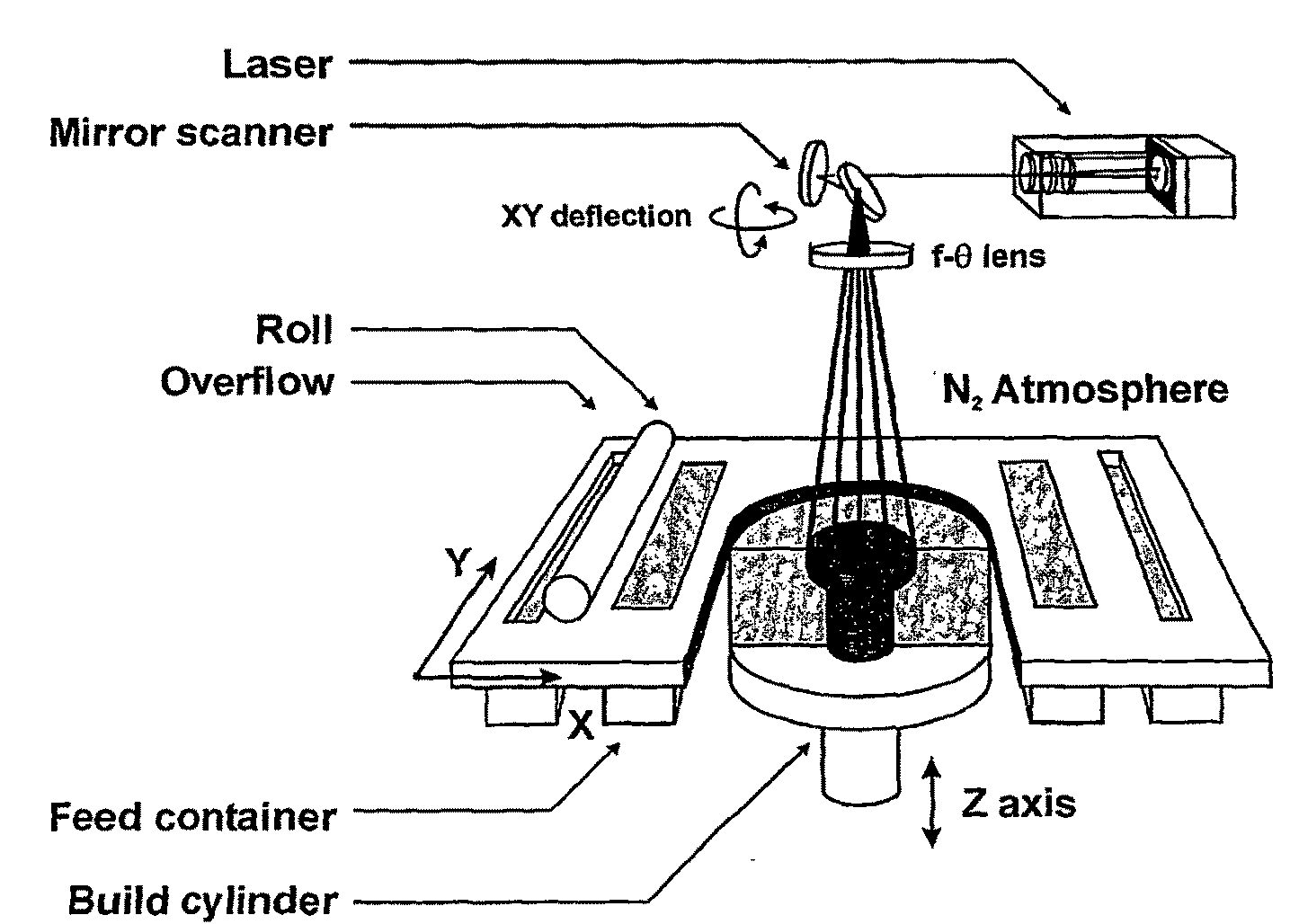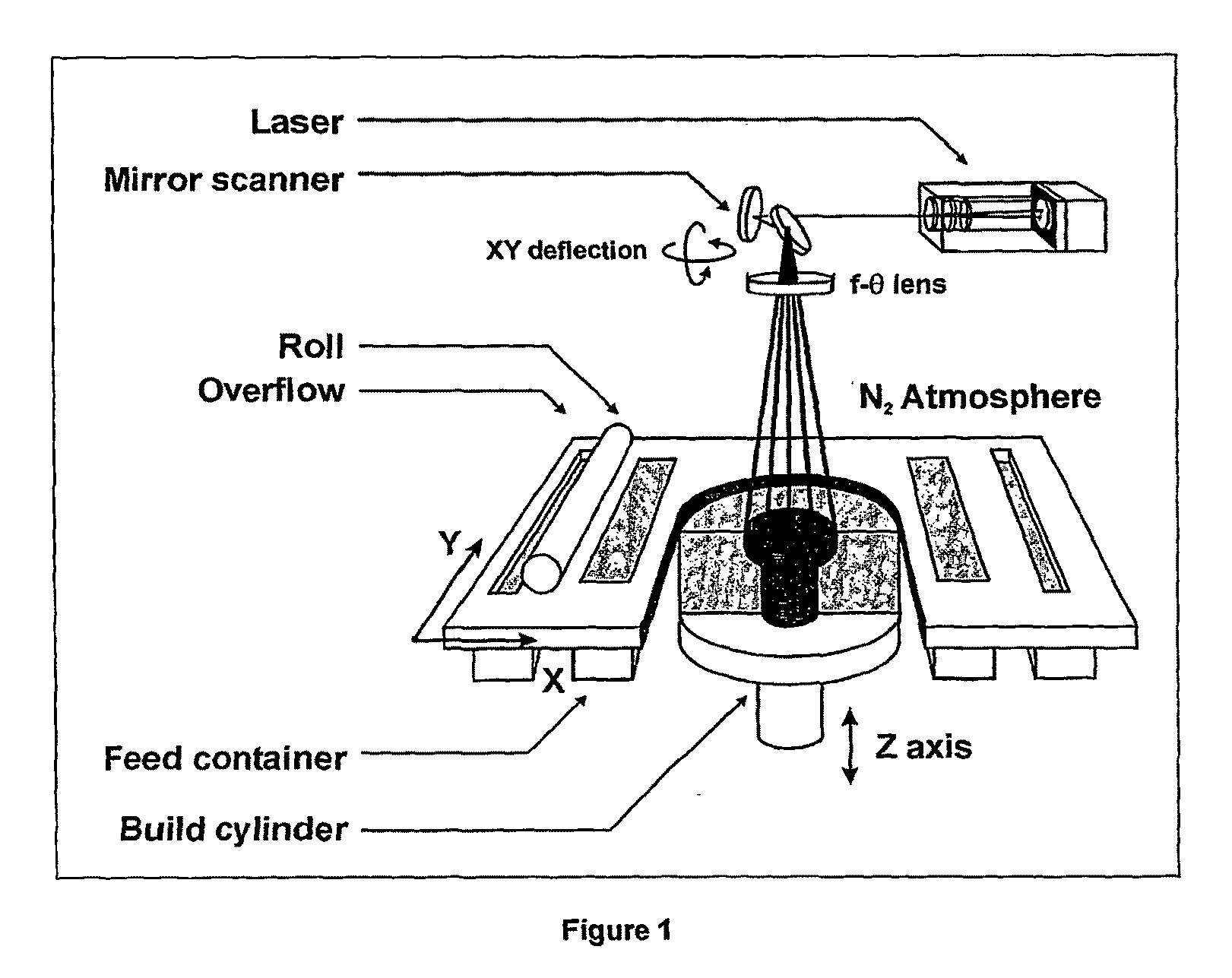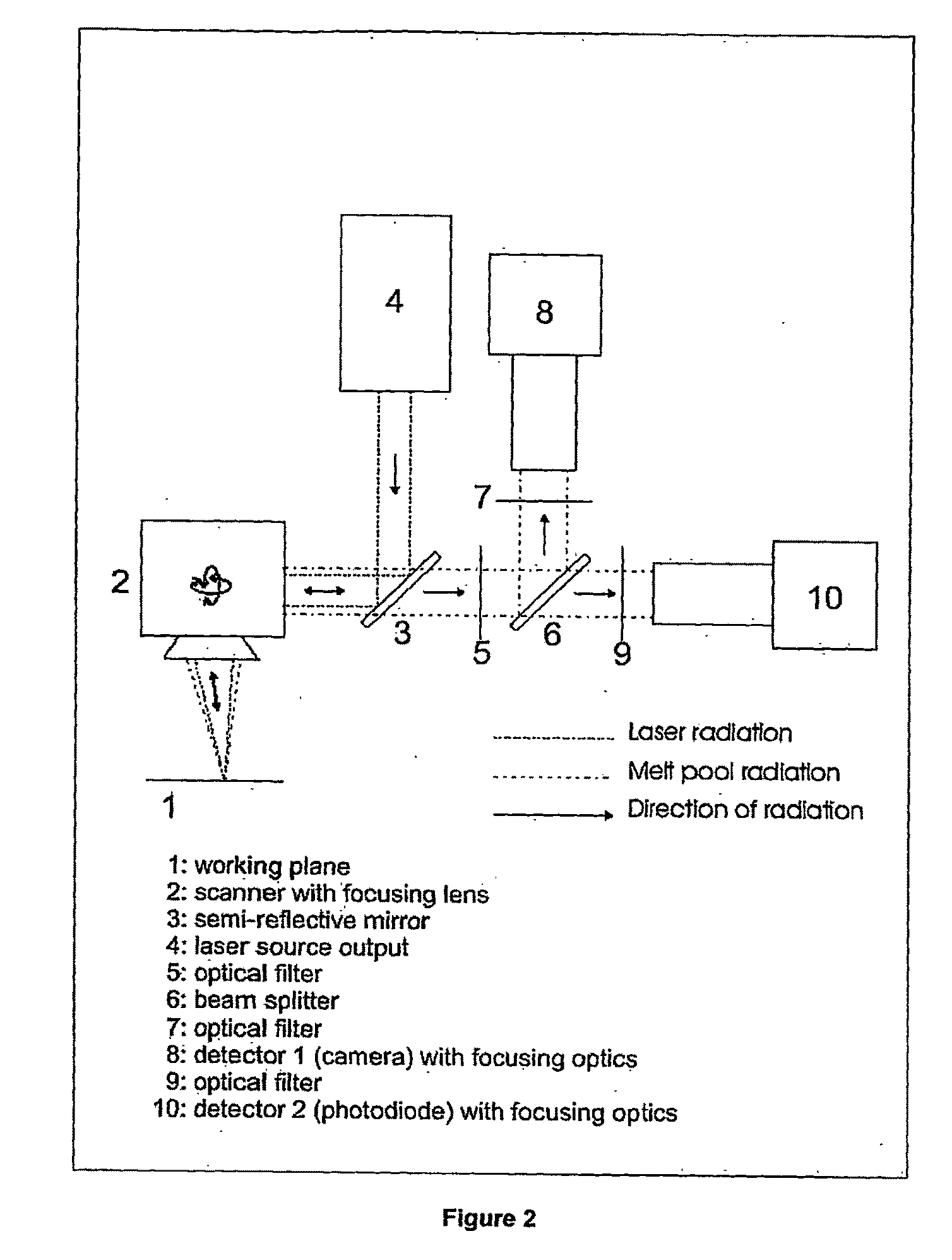Procedure and apparatus for in-situ monitoring and feedback control of selective laser powder processing
a selective laser and monitoring technology, applied in the direction of additive manufacturing processes, manufacturing tools, manufacturing data acquisition/processing, etc., can solve the problems of liquid material spreading in the underlying powder material, overheating at the overhang plane, and dross that is formed, so as to improve the quality of the piece
- Summary
- Abstract
- Description
- Claims
- Application Information
AI Technical Summary
Benefits of technology
Problems solved by technology
Method used
Image
Examples
application examples
ILLUSTRATIVE EMBODIMENT AND APPLICATION EXAMPLES
[0108]Following illustrations show how the coaxial optical system can be used in case of the Selective Laser Melting process, to either observe the process or to actively control the process by adapting one or more adjustable process parameters based on the information recorded by a detector from the optical system. As a first illustration, a possible embodiment of the sensor system will be described. Next, a SLM monitoring experiment will be described and finally, the use of the sensor system for feedback process control will be illustrated.
example 1
Possible Embodiment of the Coaxial Optical System
[0109]FIG. 2 shows a possible realization of the coaxial optical system. Following items 4: laser output, 5: optical filter, 6: beam splitter, 7: optical filter, 8: CMOS camera with focusing lens, 9: optical filter, 10: photodiode module. The photodiode that is used in this realization is a planar photodiode with an active area of 10 mm by 10 mm. The use of this large integrating area, together with the use the specific lens system, ensures that radiation is captured by the photodiode from a zone of about 4 mm by 4 mm around the moving laser spot. The dimensions of the area around the laser spot that is projected on the photodiode may differ from 4 mm by 4 mm. However, an observation zone that is too large may cause the photodiode to capture radiation from heated or molten material at a certain distance that does not belong to the melt zone. In that case, the process variable that is measured might be distorted by the radiation of the...
example 2
Use of the Coaxial Optical System for Observation and Study of the Selective Laser Melting Process
[0118]The coaxial optical system can be used to observe and study the behaviour of the melt zone of the SLM process. This may be done for several reasons, including studying the stability of the melt zone and the influence of the process parameters (like scanning velocity and laser power), studying the effect of the powder composition on the melt zone shape and stability, etc.
[0119]For these purposes, a camera detector is preferably used instead of an integrating sensor. FIG. 7 shows an example of a melt zone observation experiment using the high speed CMOS camera. Two experiments were done to examine the influence of the addition of a small amount of silicon to an iron powder mixture. All scanning and process parameters were identical for the two experiments, the only difference being the powder composition. It is clear that the addition of a small amount of silicon powder to the iron ...
PUM
| Property | Measurement | Unit |
|---|---|---|
| scanning velocities | aaaaa | aaaaa |
| scanning velocities | aaaaa | aaaaa |
| scanning velocities | aaaaa | aaaaa |
Abstract
Description
Claims
Application Information
 Login to View More
Login to View More - R&D
- Intellectual Property
- Life Sciences
- Materials
- Tech Scout
- Unparalleled Data Quality
- Higher Quality Content
- 60% Fewer Hallucinations
Browse by: Latest US Patents, China's latest patents, Technical Efficacy Thesaurus, Application Domain, Technology Topic, Popular Technical Reports.
© 2025 PatSnap. All rights reserved.Legal|Privacy policy|Modern Slavery Act Transparency Statement|Sitemap|About US| Contact US: help@patsnap.com



